4 Easy Ways to Improve Your Paddle Board Technique
Improve your paddle board technique drastically with these four easy adjustments. They aren't complicated or difficult, but they will help you improve your overall SUP skills. By fine tuning a few key areas you will see an improvement in your comfort, efficiency, and capabilities as a stand up paddleboarder.
Contents
- Paddle Board Technique Adjustment 1: Achieve the Proper STANCE
- Paddle Board Technique Adjustment 2: Correct Your POSTURE
- Paddle Board Technique Adjustment 3: GRIP Your Paddle Like a Pro
- Paddle Board Technique Adjustment 4: Perfect Your STROKE
- Time to Give It a Try Yourself
These are common mistakes beginner paddlers make or sometimes just bad paddling habits, so don’t worry; they’re simple to correct with a few easy adjustments. The main areas to focus on for fine-tuning your SUP technique include your stance, posture, grip, and stroke. We’ll dig into each of these to explain why it’s an important area to improve as well as how to make the easy adjustments. In the end, you’ll boost your paddle board technique and see your overall SUP performance improve drastically. You can think of each stage or phase as individual pieces that when combined, improve your overall paddling technique.

Getting ready to practice some easy adjustments to their stand up paddle board technique on the Tranquility.
Paddle Board Technique Adjustment 1: Achieve the Proper STANCE
When it comes to stand-up paddleboarding, mastering the proper stance is key to boosting your performance and enjoying your time on the water. People new to paddleboarding might find it tough to keep their balance, but don’t worry! We’ll start slow by getting on the board and sitting down. As you get more comfortable, we’ll move from sitting to kneeling and finally to standing up. Let's dive into the paddle board tips that'll help you stand tall and paddle like a pro.
Step-by-Step Guide to Achieving Proper Stance
Position your board in calm, shallow water to make the initial steps easier. Sit on the board with your legs dangling on either side for stability and use your paddle to help balance yourself. Once you’re comfortable, move to a kneeling position by placing the paddle across the board in front of you. Slowly transition from sitting to kneeling, keeping your knees shoulder-width apart and centering your weight by positioning your knees on either side of the board’s center handle.
Next, transition to standing by placing the paddle horizontally across the board, gripping it with both hands for stability. Shift one foot at a time from kneeling to standing, keeping your feet parallel and shoulder-width apart. Once standing, keep your knees slightly bent and your core engaged to maintain balance. Relax your shoulders to avoid tension, and engage your core for better stability and control.

If you’re new to paddle boarding, shallow water helps you regain your footing easily if you lose balance, making it less intimidating.
Achieving the Proper STANCE
Your feet form the foundation for your stand up paddle board technique. But it’s not only where you place each foot. Overall, the way you stand influences your posture and stroke, so getting your stance right is important. Proper foot placement can make all the difference. It’s an easy adjustment to make and its effects will help your overall SUP performance at each stage.
For the best performance, make sure you are not too far forward or too far back on your board. But that doesn’t mean stand right in the center either. Next time you’re out observe other paddle boarders. You’ll notice if they are too far forward if the tail of the board is coming out of the water. And, if they are too far back, the nose of the SUP will be out of the water. So shimmy your way to a middle point that keeps your board (from nose to tail) flat on the water. This is usually near the carry handle.
Now that you’re in the right position, make sure your feet are pointed forward. It’s OK to angle them outward a couple degrees. You just don’t want to point them too far outward or inward because that will affect your balance.
Bend at the Knees and Improve Your Stroke Technique
Lastly, with your feet in the proper position, you also want to bend your knees slightly. Keeping your knees slightly bent allows them to act as shock absorbers. Think of them like the suspension of a car that cushions the ride. They help to reduce the wobble of your board which can throw off the other aspects of your paddle technique. As you'll see with the others, this is an easy adjustment to make that benefits all aspects of your paddling performance.

Adjusting your stance will help improve all aspects of your paddle board technique.
Paddle Board Technique Adjustment 2: Correct Your POSTURE
Posture is often overlooked, but a crucial ingredient to stand up paddle boarding. Luckily this easy adjustment will help you improve not only your comfort, but your overall efficiency and capability as a stand up paddleboarder. An improper posture can lead to unnecessary strain on your back, arms, and legs. Basically, having a bad stance simply makes stand up paddle boarding harder on yourself. But no worries; it's easy to correct and doesn't take much time or effort. It's simply remembering to build these good habits into your paddling experience. You'll have more fun and your body will thank you for it.
Start with the Foundation
Since your stance is the foundation and base of your power, make sure you've got that right (as explained above). An incorrect stance leads to poor posture and a proper stance almost forces you into a good posture naturally. Get yourself into the right position and avoid any bad habits. With your feet shoulder width apart and knees slightly bent, do your best to keep your back straight and engage your core.
Straighten Up and Paddle Right
By keeping your back straight you're able to transfer more of the effort to your arms, core, and legs. This distribution helps to improve your comfort and efficiency and therefore your overall endurance. Getting in the right posture and position means improving each stage including the power phase of your paddling.

Demonstrating proper posture on the water—back straight, knees slightly bent, and core engaged for maximum paddling efficiency.
Engage Your Core While Paddling
It might seem slightly awkward at first, but perform a few strokes while focusing on your posture and you’ll quickly realize how much more power you get from each stroke. You’ll also notice that your balance and stability are greatly increased with good posture. Leaning one way or the other can throw off your paddle board technique and that lack of stability just makes paddling harder. Instead of extending the range you can paddle, you’re making things harder on yourself and weakening the power phase of your stroke.
Paddle Board Technique Review – STANCE and POSTURE
- Feet: Shoulder-width apart.
- Knees: Slightly bent, using leg muscles as shock absorbers.
- Back: Keep it straight to distribute effort to your arms and legs.
- Core: Engage for better efficiency and endurance.
Paddle Board Technique Adjustment 3: GRIP Your Paddle Like a Pro
Your paddle is what propels you across the water, so getting your paddle grip right is crucial for getting the most out of your stroke and stance. This easy adjustment to your paddle board technique will help you increase the power of your stroke so you can paddle faster and farther.

You can easily identify the front face of the blade by the logo and graphic.
Paddle Boarding Paddles and Their Blade Angle
First off, always make sure your paddle blade is facing the right way. You’ll notice the blade of your paddle is bent at an angle. The reason for this design is that it optimizes your body mechanics with your paddle. Since you’re standing (not sitting as you would in a kayak or canoe) and reaching a good distance in front of yourself, the angle allows you to connect with the water all the way through your stroke. This in turn improves your overall efficiency and provides greater thrust. So remember you want the paddle blade angle to face away from you. Our paddles have the logo on the side you want facing away from you to help you avoid this mistake. It’s an easy thing to misunderstand when you’re just starting out.

The paddle blade angle should tilt away from you when held correctly.
Grip Your Paddle for Power to Improve Your Paddle Stroke
Lastly, for proper paddle board technique, you want to get your grip right. One hand goes on the top of the "T" bar and the other is placed on the shaft. Don't place your hands too close together or too far apart because that can reduce the power of your stroke. There's a simply way to overcome this which is explained in the graphic below. Have a look and give it a try yourself.
RELATED: How to Hold a SUP Paddle?

An easy way to make sure your hands aren't too close or too far apart on your SUP paddle.
Paddle Board Technique Adjustment 4: Perfect Your STROKE
Correcting paddle board stroke takes some practice and experience, but it’s easy to adjust if you follow these tips. The best thing to do is simply pay attention to how it feels when you’re out on the water. Ask yourself, "Am I getting enough power from each stroke?" And "Am I feeling any discomfort? If so, where?" If you’re new to the sport, there may be some muscle soreness caused by activating muscle groups you’re not used to. That’s OK, just make sure to stretch before and after, which is a good habit regardless of your skill level. What you’re looking for is any joint pain or acute discomfort. Pain during your stroke rather than soreness after is a good indicator that your form could be improved.
Assess Your STROKE to Fine Tune Your Paddling Technique
You might be reaching too far out or pulling with just one muscle group instead of using your entire body. Luckily, if you've been conscious of your stance, posture and grip, you should be able to avoid this. However, if you're still feeling discomfort have a look at the graphic below to make sure you're following each element of a perfect stroke.

Infographic: the elements of a perfect stroke point-by-point.
Pay Attention to Your Reach
If you feel like you're comfortable, but not getting enough power, think about the phases of your stroke. Aim to place the paddle in the water a comfortable distance ahead of you toward the nose of your SUP. This is called the reach. An overly-short reach may keep you from getting the drive you need. It also decreases your overall efficiency. Find the sweet spot by getting out on the water and practicing. You'll feel it in your body and the travel of your SUP if you're reaching too far or too short.
Catch Phase - When the Paddle Hits the Water
Another common issue with paddle board technique can be the catch phase of the stroke. This is when the entire blade enters the water. You don't want to slap, jab at the water, or leave your blade only partially submerged. You need to place the paddle blade fully in the water perpendicular to you with authority. Think of your paddle as an extension of your arms. When swimming, you want to make a full, confident stroke. Do the same on your paddle board. Pull the paddle along the length of the board until it reaches your feet. Make sure you hold it tight enough that the blade doesn't flutter.
Paddle Board Technique Review - GRIP and STROKE
- Make sure the paddle blade angle is facing away from you.
- Don’t place your hands too far apart or too close together.
- Reach your paddle out a comfortable distance in front of you.
- Place your paddle in the water with authority (no slapping).
RELATED: The Best Paddleboard Stroke for Beginners
Time to Give It a Try Yourself
As you can see none of these are difficult techniques to master. More advanced techniques for things like turning and stopping aren’t anything to shy away from either. Once you get your feet in position and your posture right, your grip and stroke will improve. Paddling becomes much easier and you increase your overall range because you’re not working against any bad habits that are making things more difficult on yourself. Instead you’ll be one of the paddlers effortlessly cruising. The combination of fine tuning each of these areas with a few easy adjustments will help you see results fast. You’ve learned how to improve your posture, stance, grip, and stroke with a few easy adjustments to your paddle board technique. Now you’re ready to get out on the water and give it a try. You’ll quickly recognize what areas you need to work on. Then, as a more capable a stand up paddleboarder, you’ll reap the rewards of a more comfortable, swift, and efficient ride!


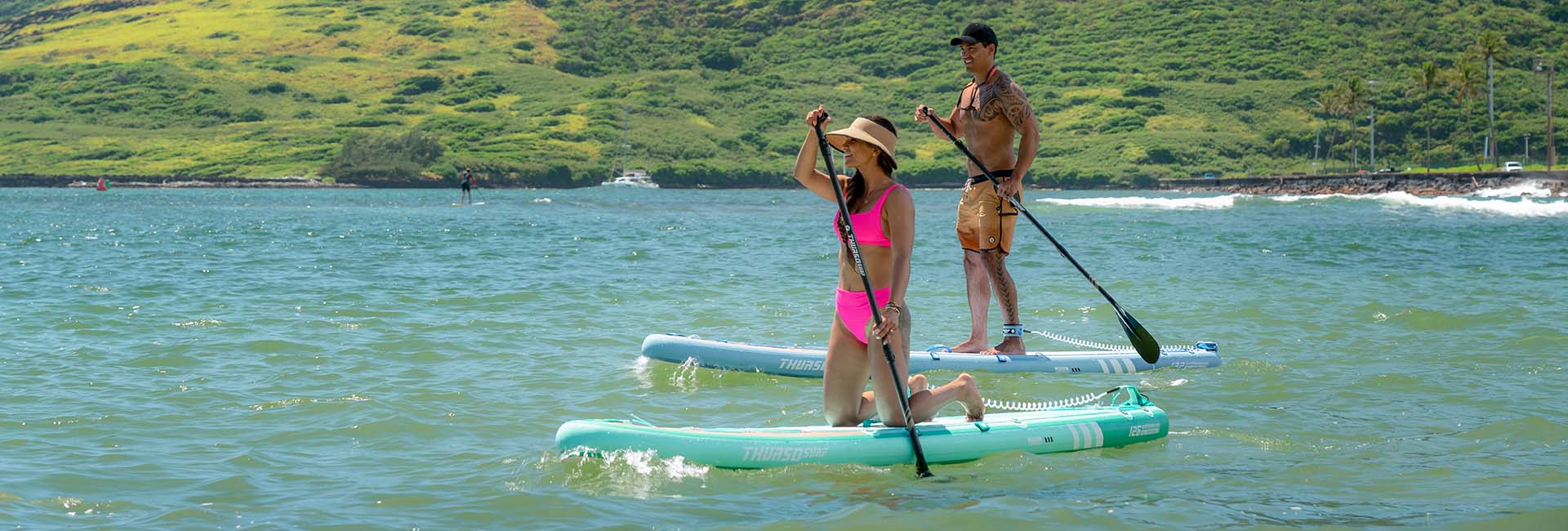
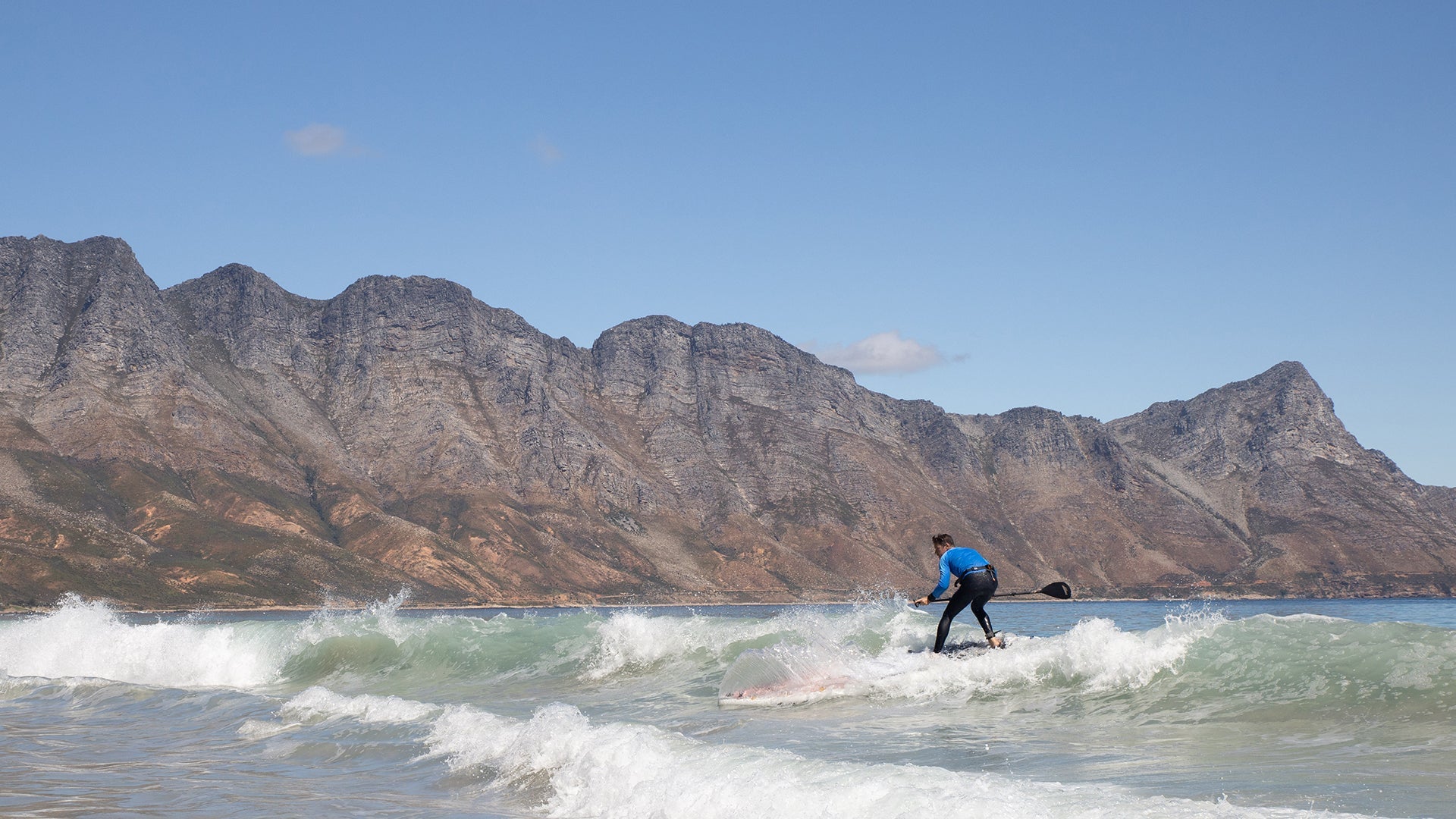
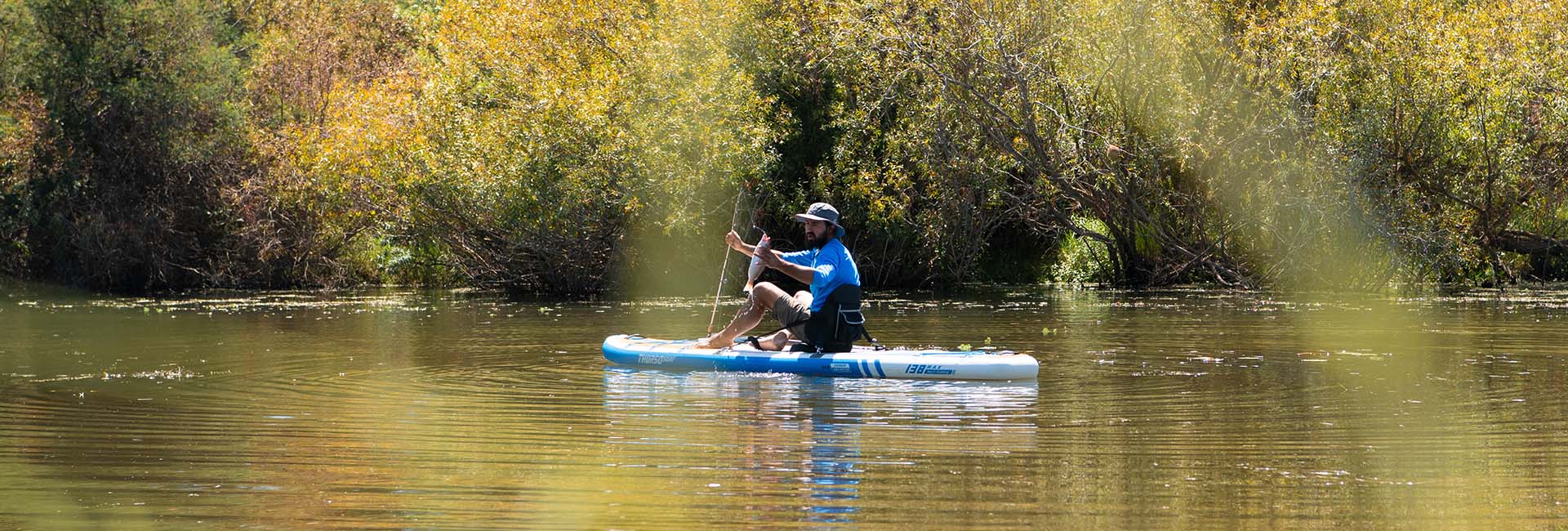
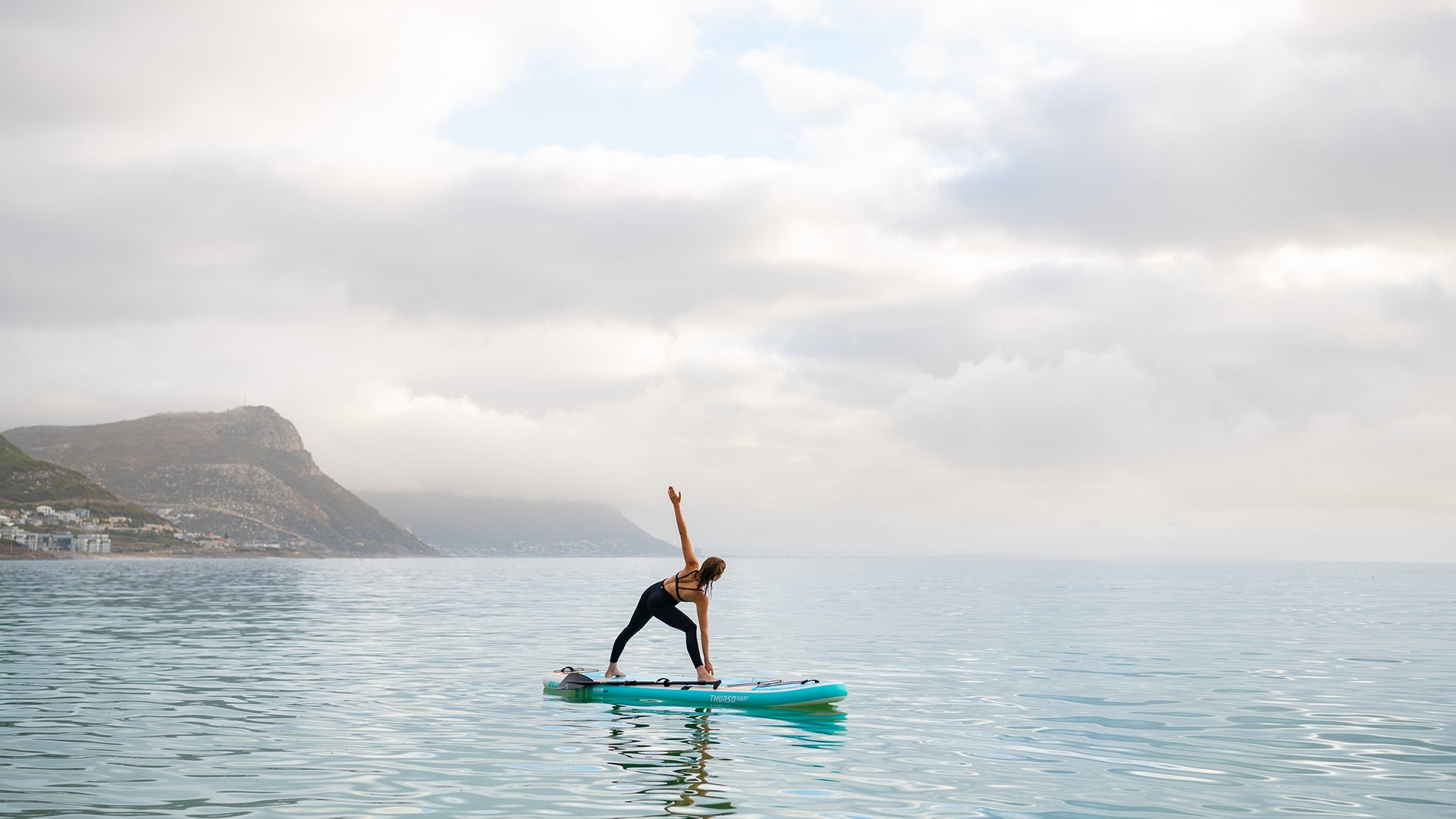
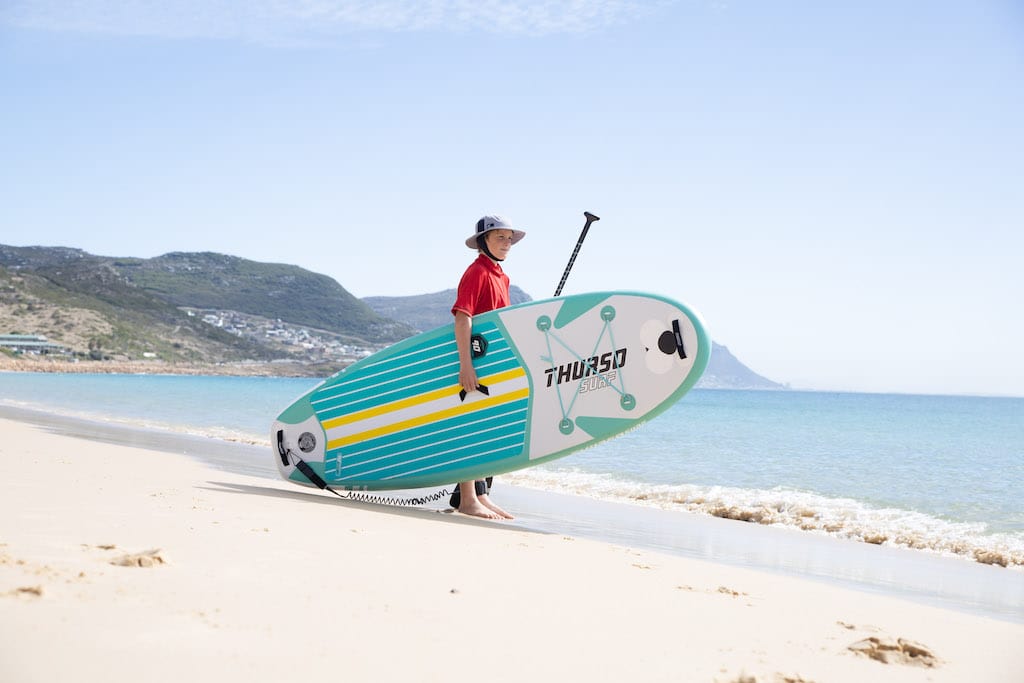
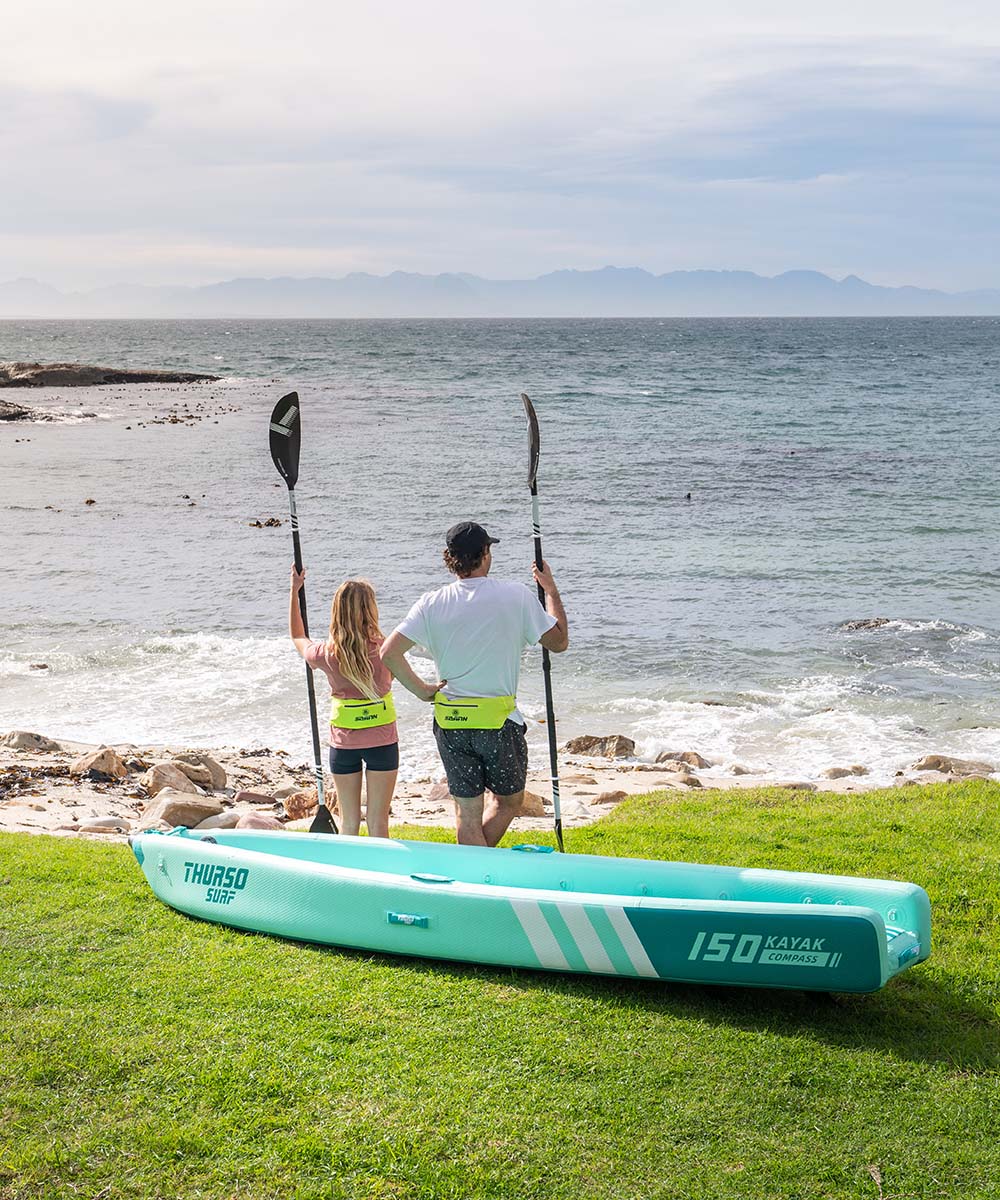
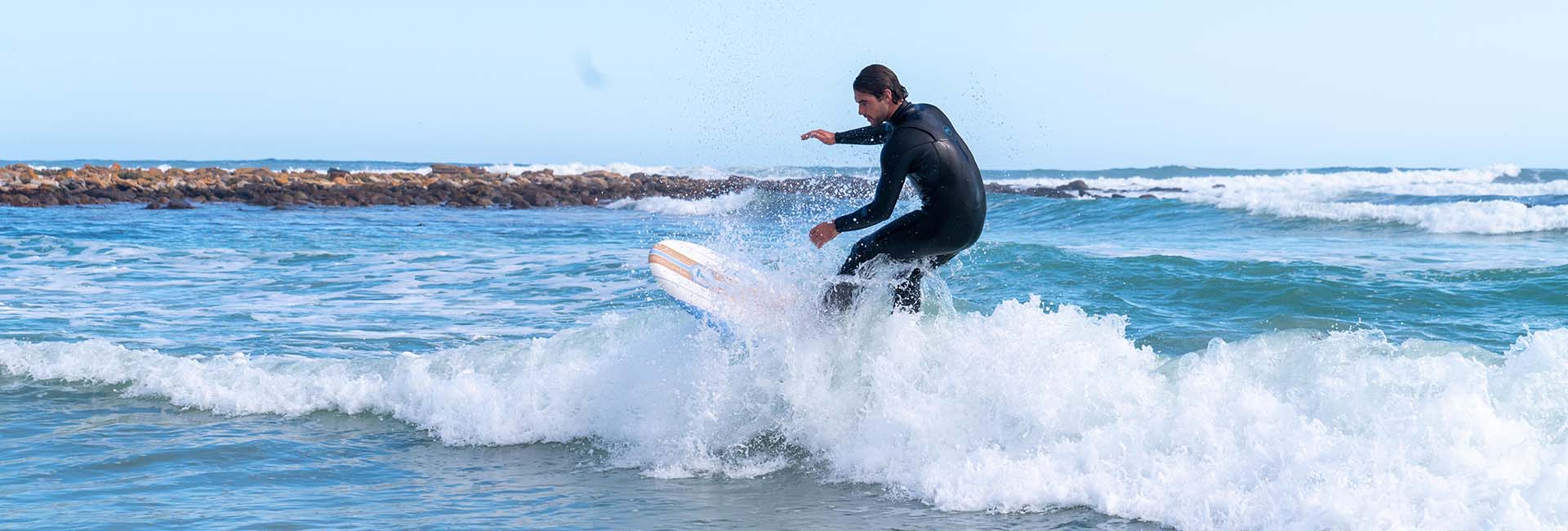
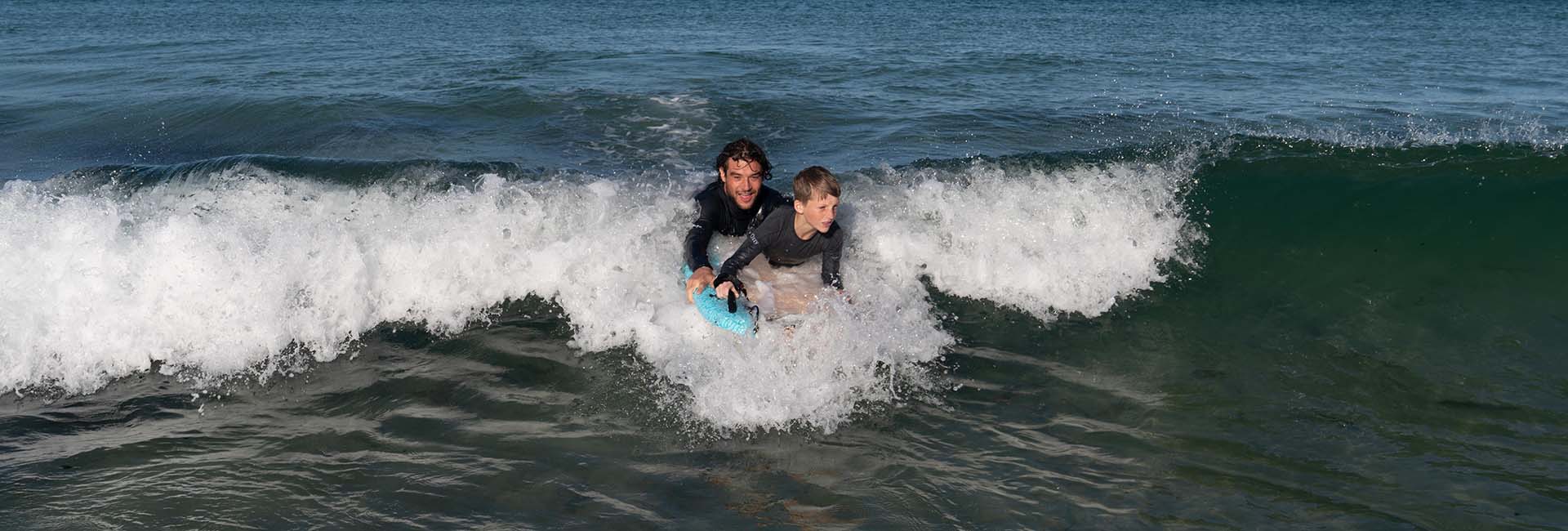
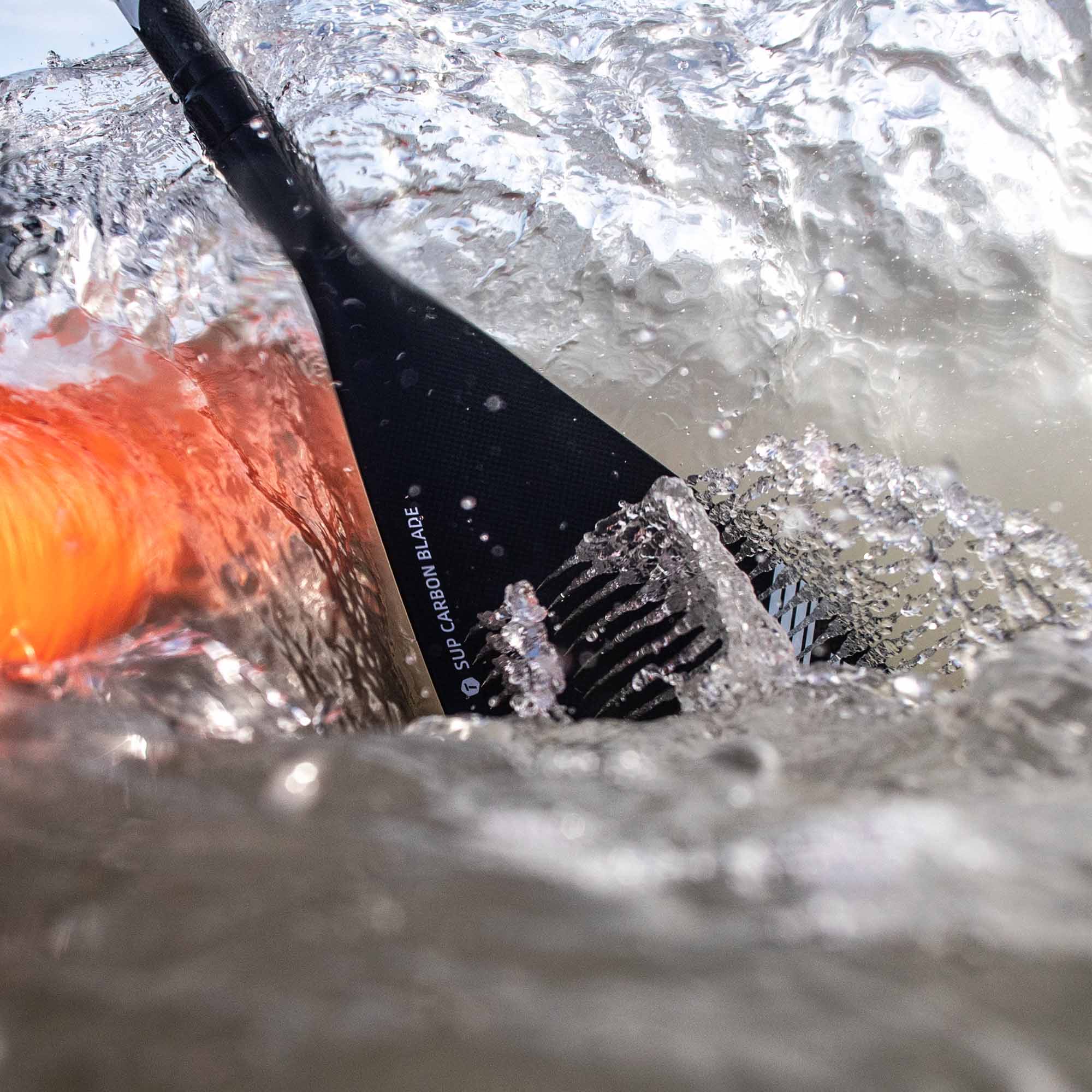
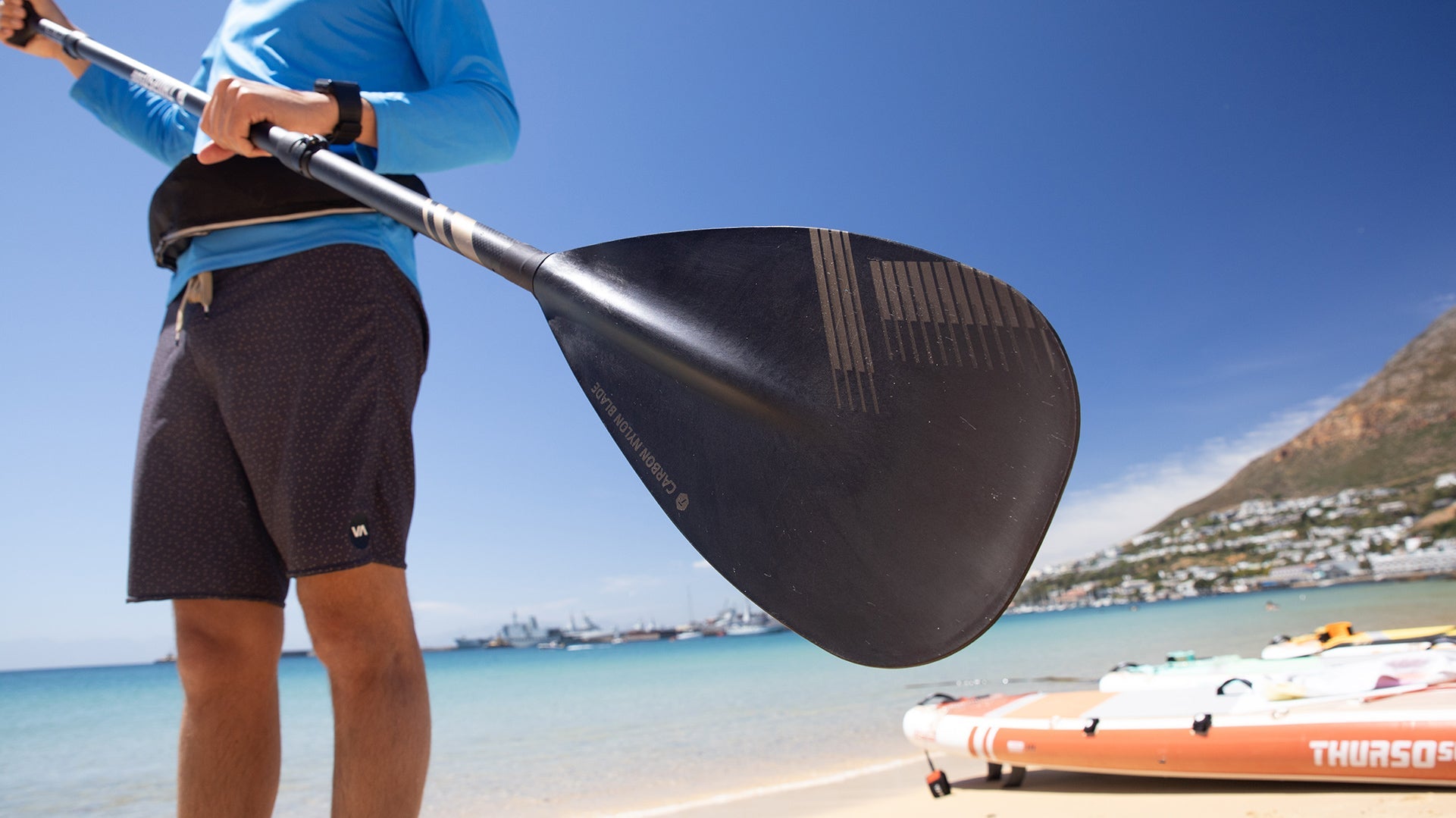
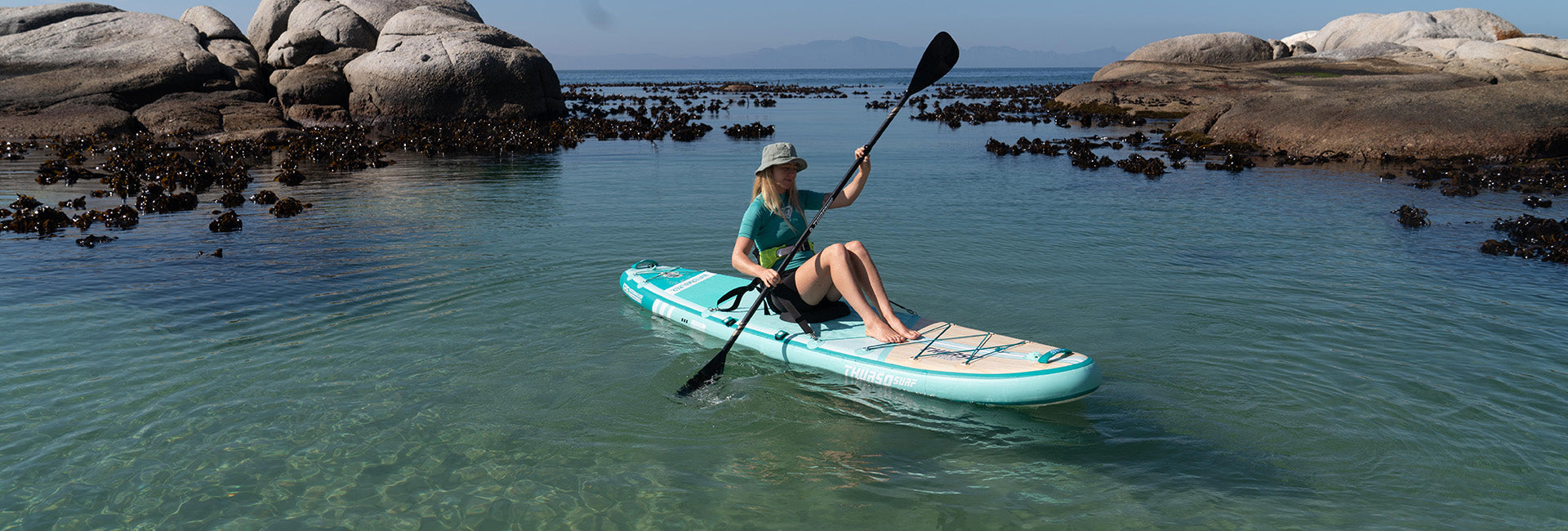

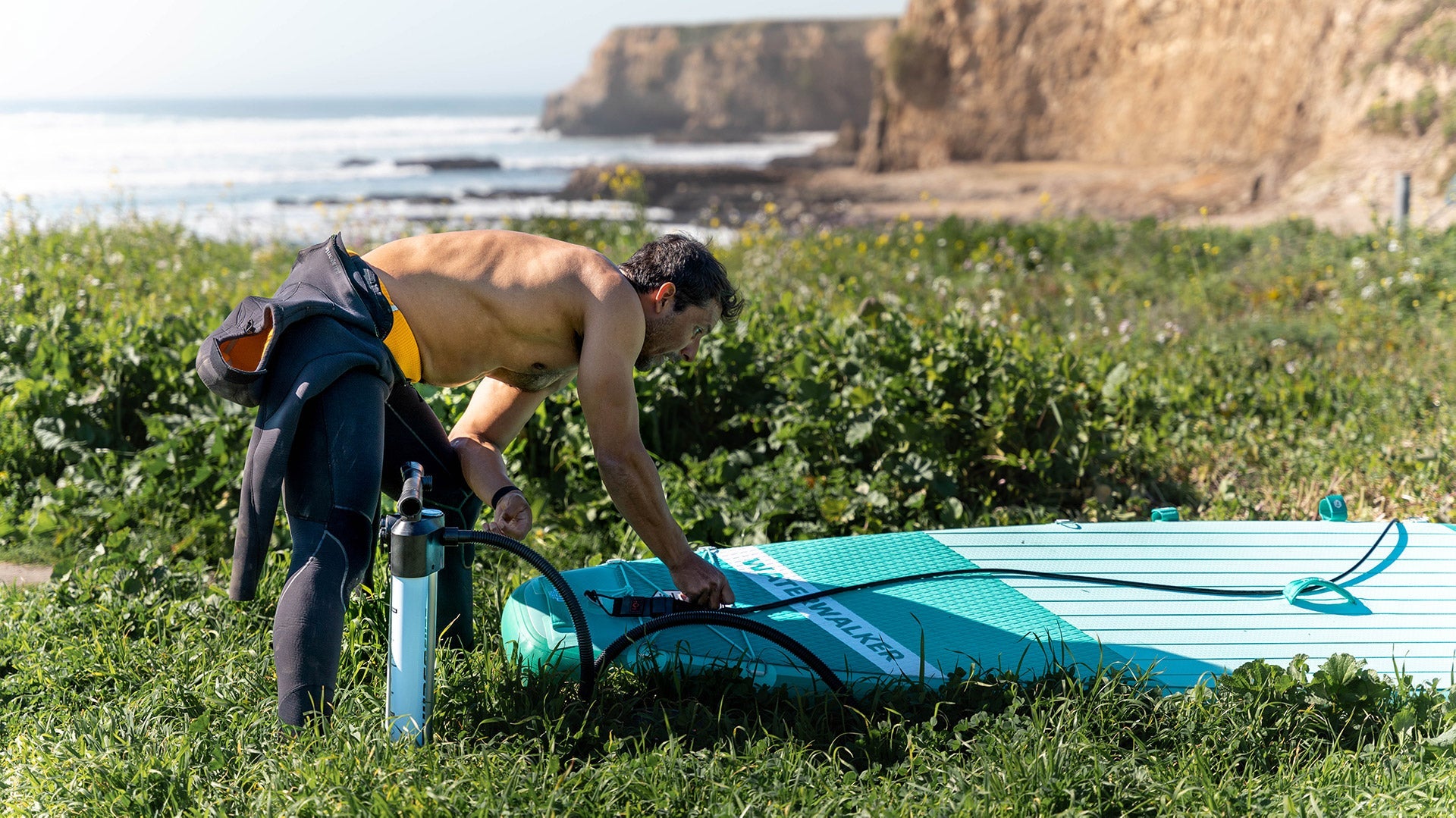
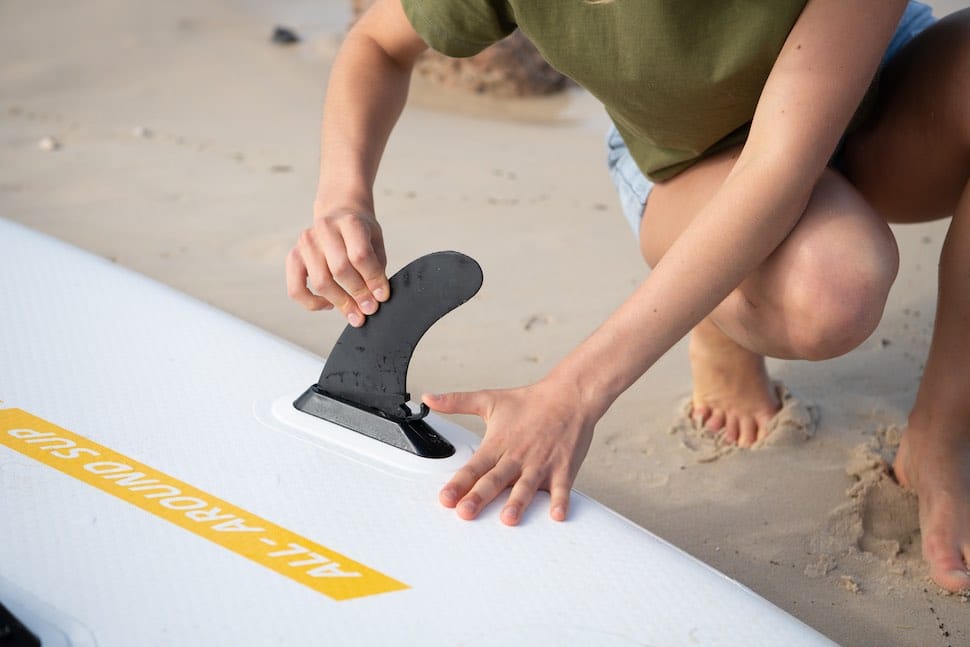
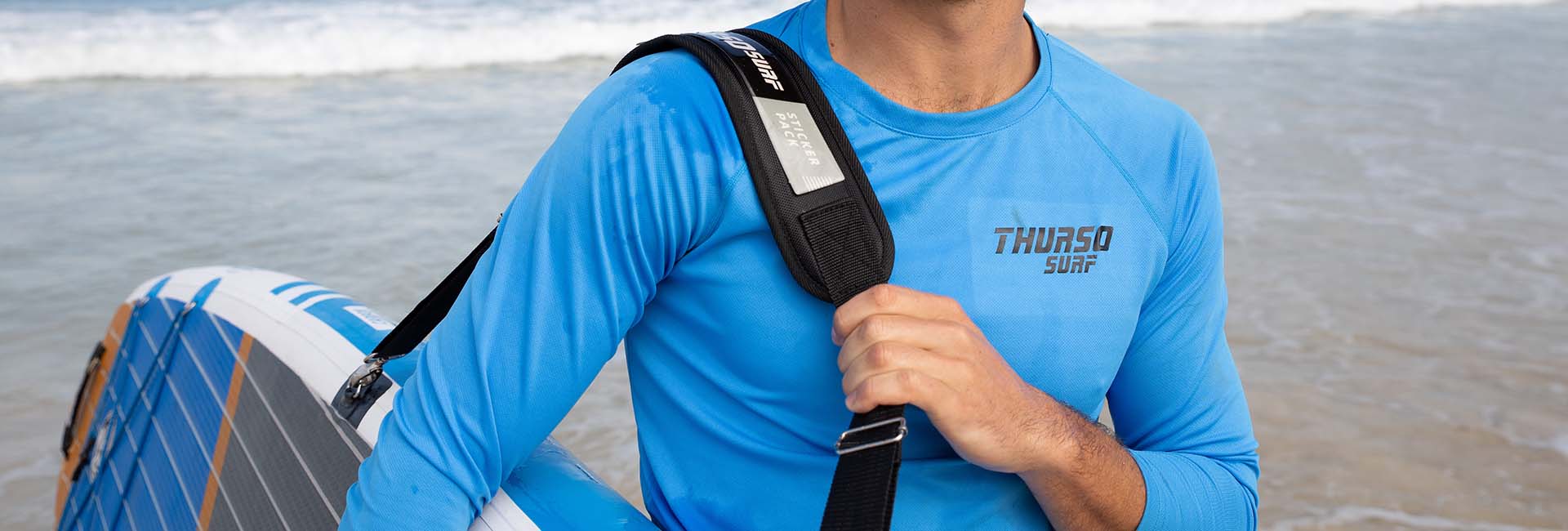

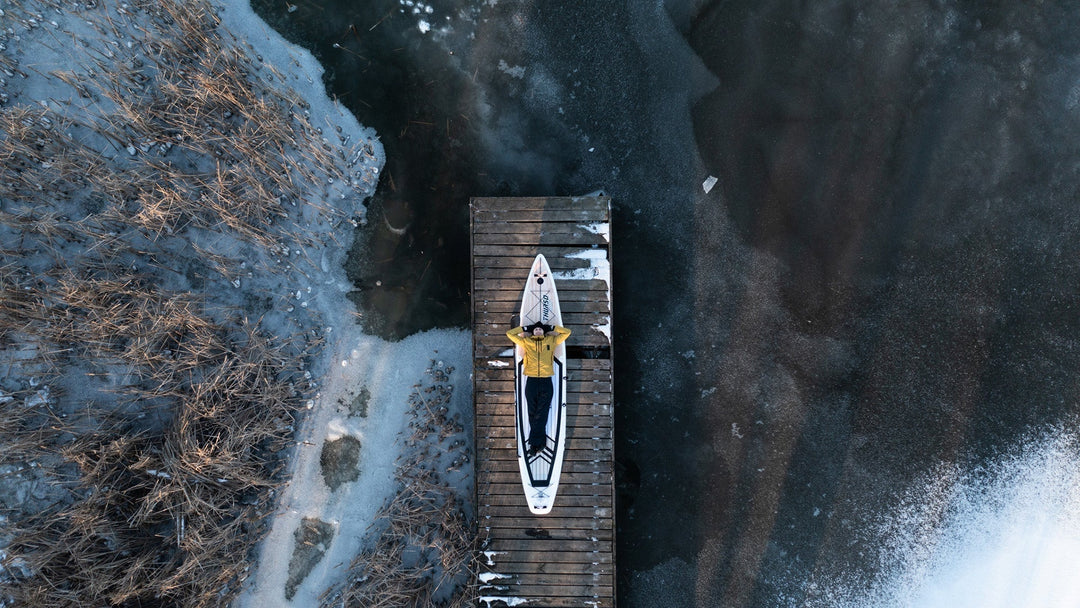
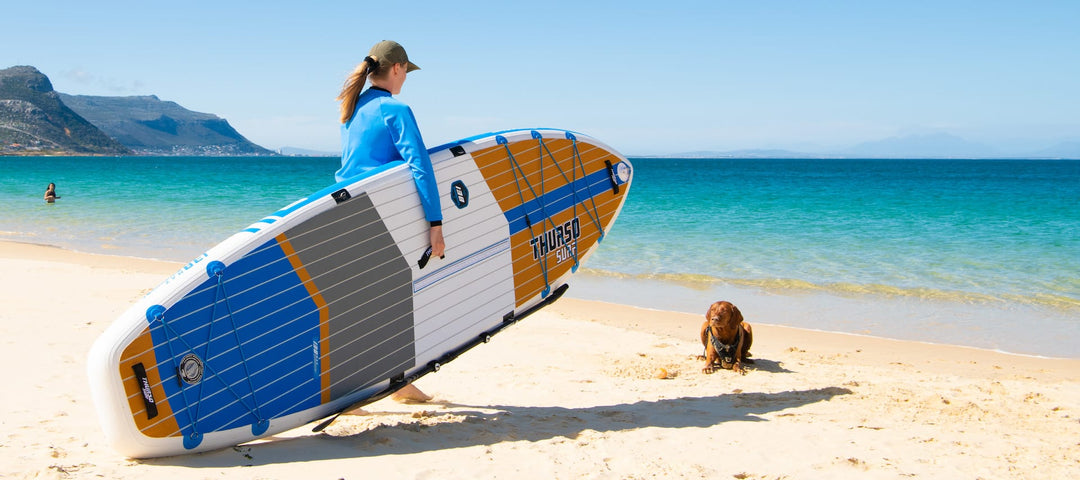
Thanks for the love! Let us know how you progress! Enjoy the waters down in NZ!🇳🇿
Keep paddling,
Matt
Social @ Thurso Surf
Your article is quite helpful! I have so many questions, and you have answered many. Thank you! Such a nice and superb article, we have been looking for this information about paddle board technique. Great post…
Hi Michele,
So stoked that you’re having a blast with your new Waterwalker! We’re huge fans of the carbon paddle too. Once we tried them ourselves, we knew we couldn’t go back so, we decided to include a carbon shaft paddle in every SUP package we make! Really glad you’re getting a lot out of the guide. Hit us up right here or at contact[at]thursosurf[dot]com with more questions or to talk gear and paddling anytime!
See you on the water,
Matt
Social @ Thurso Surf
This is one of the best guide I found online!
Using the stand up paddle is really importance to have a correct stance and to paddle with the correct technique and this guide helped me to correct some basic errors.
Moreover, it is really important to use a paddle built with good material and the CARBON paddle I received with the Thurso Waterwalker is well made and it works very well.
It is not common to find a carbon paddle in a SUP package in the Waterwalker price range!
Leave a comment